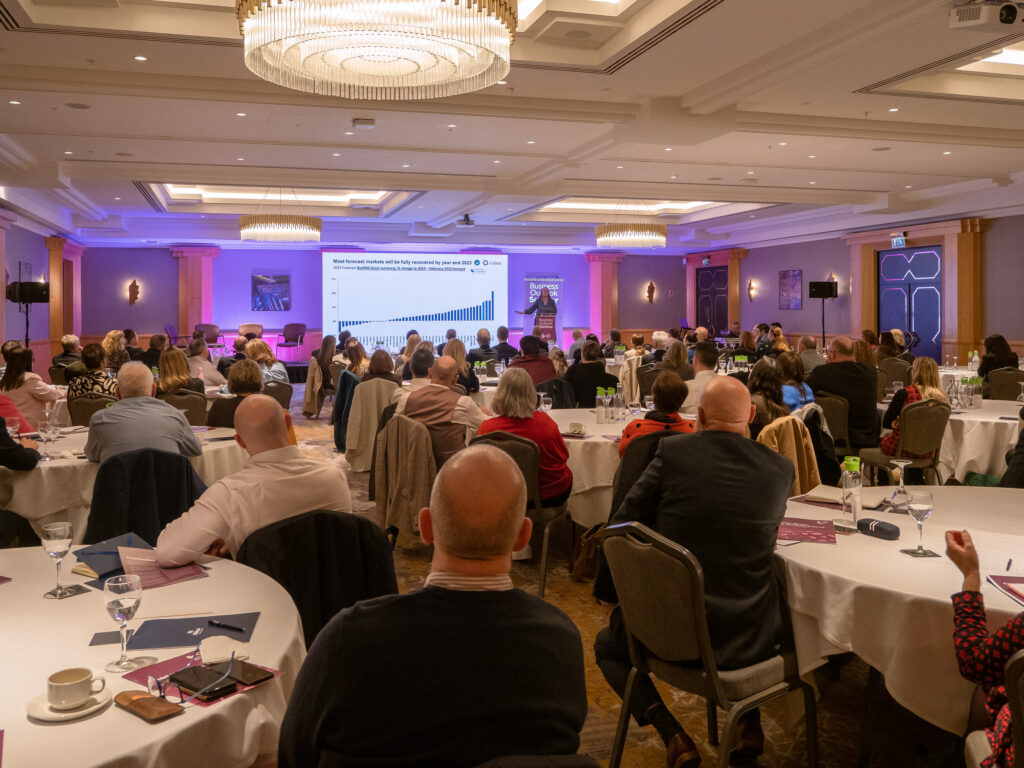
Business Outlook Seminar
SOLD OUT Your chance to get the inside track on...
5 February 2024
Read Full Story
22 July 2022
Northern Ireland hotel statistics for the first half of 2022, just released by STR (the independent benchmarking company), show that a poor start to the year impacted on average room occupancy, which sits at 66.4% year to date, four percentage points behind what it was in 2019 for the same period, but that the market has picked up month on month since January.
Discussing the statistics Janice Gault, Chief Executive, Northern Ireland Hotels Federation (NIHF), says:
“These are interesting figures. If June 2022 is reviewed in isolation, it shows a solid performance with an occupancy rate of 81.1% for the month and an average room rate of £107.41. Comparing this year with last is not particularly meaningful as the sector had only reopened on the 24th May 2021 following restrictions when a number of premises opted out of a full opening. The real comparator is pre-pandemic analytics from 2019 which indicated a stronger June in terms of occupancy but with a lesser room rate.
“Overall, Belfast has seen the strongest performance supported by events, return of conferences and its attraction as a short break destination. Other locations continue to report good trading based on leisure, weddings and the return of tour business.”
Janice adds: “The sector is working to get back to pre-pandemic levels though there are challenges. The Northern Ireland Hotels Federation has been working with members to assess staffing levels and vacancies within the sector. A recent member poll highlighted how performance is being curtailed by recruiting difficulties. There are currently 146 hotels trading in Northern Ireland and, with a full staffing complement, they would support 10,000 direct positions. All hotels polled had vacancies which equate to around 1,000 jobs to be filled.
“The main vacancies relate to chefs and kitchen staff. However, over 50% of those polled had housekeeping, restaurant, bar service, supervisory and management roles. If you consider this alongside the Labour Market Report released by NISRA this week which shows a record number of 775,400 (70.1%) people receiving pay through HMRC PAYE in June, this is the tenth consecutive month that this figure has grown. The unemployment rate sits at 2.6% with a worrying 28% of those deemed eligible to work in Northern Ireland being economically inactive. Attracting new employees remains key to restoration of the industry and yet it has proven to be one of the greatest challenges facing the sector over the last decade. The COVID-19 pandemic has exacerbated an already difficult position.”
Janice continues: “We know that the hotel, tourism and wider hospitality sector is not alone in its plight to attract more staff. There are more vacancies than job-ready candidates which creates competition between business segments. Hotels have secure, flexible roles which offer excellent long term career paths, with short term contracts, seasonal roles and part-time opportunities for those on a different career trajectory. The local labour market will not be able to fill all the roles on offer, which means the recruitment pool needs to be widened. The NIHF believes that collaboration is a key part of the solution and has been working closely HATS (Hospitality and Tourism Skills) collaborative network, Invest NI, Tourism NI and other stakeholders on workstreams and initiatives around attracting, engaging and retaining staff.
“The Federation would like to see changes to immigration policy and a recognition of the role the industry can play in creating long term, secure and sustainable roles which support economic growth. The sector needs to be part of the government’s ambition for the 10x Economy with an appropriate skills and education framework to support it. NIHF has commissioned a study by Ulster University Economic Policy Centre to review the issue, highlight the challenge and explore solutions.”
Outlining the next steps Janice says: “With one in ten roles currently vacant within the hotel sector, the current performance is a remarkable bounce back and indicative of the contribution the industry can make. Further growth is possible with access to a wider labour market and support for the sector in terms of skills and education.”

SOLD OUT Your chance to get the inside track on...
5 February 2024
Read Full Story